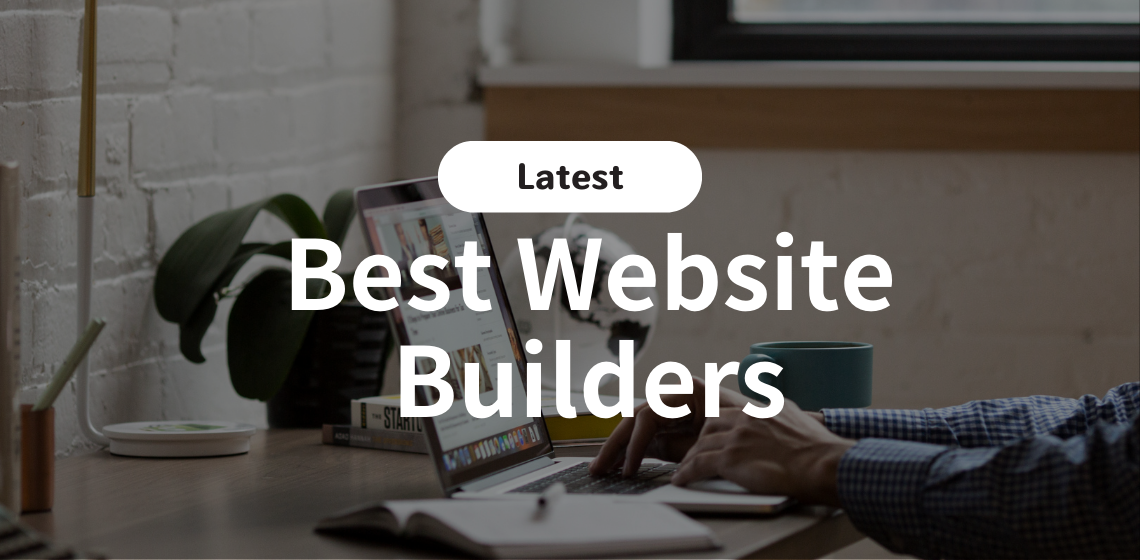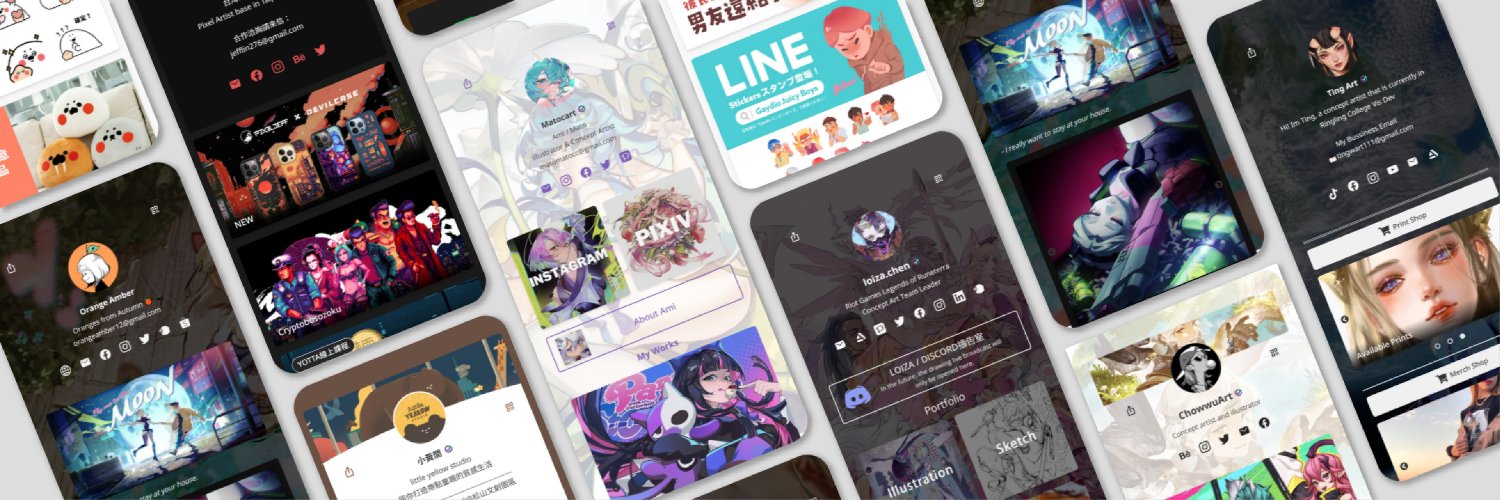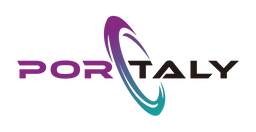Best Website Builders in 2025: WordPress, Wix, Weebly, Portaly, Webflow
2025-01-22

What platform should you use for web hosting and web building to create a personal or business website?
Table of Contents
- Things to Keep in Mind
- Best Free Web Hosting Platforms in 2025
- Upgrading to a Paid Plan
- WordPress
- Wix
- Weebly
- Portaly
- Webflow
- Final Thoughts
- About Portaly
Whether you code your own personal or business website or hire a web developer, the whole process can be expensive in terms of time or money.
As a result, web hosting platforms are often considered in order to save on the costs of the initial design as well as ongoing maintenance. Web hosting provides users with a simple and convenient way to build a website, and web builders provide a simple drag-and-drop interface for users to build a website quickly and easily.
Things to Keep in Mind
| Hiring a web developer | Building your own website from scratch | Using a web hosting platform | |
| Flexibility | Interface design and functions can be customized | Highest freedom, do as you please but limited to own skill level | Design and functions will have certain restrictions |
| Difficulty | No need to learn website-related skills such as programming, UX, UI, design, or SEO. | Need technical knowledge and a basic grasp of design, UX, UI, and SEO practices. All issues must be dealt with by yourself. | No technical background is required. Quickly integrate various web functions |
| Time | Must schedule appointments for all maintenance issues | Personal time invested | Most offer a fast drag and drop interface |
| Cost | Highest cost, followed by additional costs for maintenance and extension | Time required to gain and maintain technical knowledge necessary | Lowest cost. No technical background is required. |
Best Free Web Hosting Platforms in 2025
In this article, we introduce four popular web hosting platforms for creating a personal website: WordPress, Wix, Weebly, Portaly and Webflow. Each of them has its own features, and all of them offer a free version.
However, not all free versions are the same.
If you are budget-conscious or want to try it out first, this article is for you.

Upgrading to a Paid Plan
As a personal website grows, upgrading to a paid membership may be necessary due to needs such as traffic, functionality, and branding.
This article outlines and compares the paid plans of four common web hosting platforms to help you evaluate which one is best for your long-term needs, whether it be free or an upgrade to a paid plan.
WordPress
WordPress is the leading website-building platform in the world, with more than 40% of websites using WordPress to build their website. It has almost 60,000 plugins and 10,000 themes to choose from, making it a great website-building tool for both engineers and non-programmers.
WordPress has two versions, WordPress.org and WordPress.com. WordPress.org is a free service to download and install, but you will need to find your own web hosting and domain, and bear the cost. The advantage is that it is highly flexible and there are few restrictions, but it will take some time to get used to.
WordPress.com is similar to Wix or Weebly, integrating hosting, domain, themes, and various functions, allowing you to build your website in one place.
WordPress Payment Plan
WordPress.com has five payment plans: Personal, Premium, Business, Commerce, and Enterprise. The official recommendation is “Premium”.
Payment means no ads in general. The “Personal” plan has 6GB of storage space; the “Premium” plan includes more features commonly used in personal websites, such as adding ads to earn revenue, more theme options (and advanced customization of the page), uploading videos, integrating Google Analytics, etc., and 13 GB of storage space.

The “Business” plan comes with additional features such as plug-ins, SEO, website backup, databases, and more advanced themes to choose from, with a storage space of 50GB.
The “Commerce” plan is designed specifically for brands with eCommerce needs, it comes with international payments, logistics integration, marketing tools, advanced page design, and the same storage space of 50GB.
For more details about the plans and comparisons, please refer to the pricing and plan page on WordPress.com.
Wix
Wix was founded in 2006, specializing in integrating all website services, allowing people who don’t know how to program to quickly set up their own website.
There are currently more than 500 well-designed website templates for you to choose from, providing members with e-commerce, blogs, video and audio content, and other diversified functions.
Wix Payment Plan
Wix charges monthly, without an annual discount at the moment. Both website plans and business plans are available, and both can use website templates.
The cheapest plan is the ‘Light’ plan, which costs $17 per month. It allows you to customize your domain for one year but only offers 2 GB of storage. In addition, it doesn’t accept payments, which makes it less suitable for creators who wish to monetize through traffic.

The “Core” plan costs $29 per month and also includes a free one-year domain. Storage is increased to 50 GB. This plan accepts payments and provides a full marketing suite along with an eCommerce platform, making it ideal for creators with product sales needs.
The “Business” plan costs $36 per month. It offers 100 GB of storage and allows for up to 10 collaborators, making it suitable for creators with a team. It also provides more advanced features for product sales compared to the “Core” plan, such as support for multiple currencies and automated sales tax.
The “Business Elite” plan costs around $159 per month. It comes with unlimited storage, 100 collaborators, and advanced marketing suite and eCommerce.
No matter which plan you choose, you can remove the Wix branding. For more detailed plan descriptions and comparisons, please refer to the Wix pricing page.
Weebly
Weebly was founded in 2007 and was acquired by the American mobile payment and financial services company Square in 2018. Since then, it has focused on developing e-commerce websites, so there are various tools specifically for e-commerce brands, such as inventory management, order tracking, and coupons.
Weebly Payment Plan
Weebly offers 4 plan, including a free plan for basic use. However, if you’d like a custom domain (and you do), you’ll have to go with the paid plan.
But, if you’d like to not be annoyed by Square Ads, have access to analytics, and have password protection, then you’ll have to upgrade to the Professional plan.
But, if you’re planning to use Weebly for eCommerce, then you will have to go with the Performance plan if you’d like your customers to have access to a PayPal payment option.
The “Personal” plan costs $10 per month, and doesn’t offer much more than the free plan. You’ll gain access to digital product sales, pop-up notifications, shipping labels, and shipping calculator.
The “Professional” plan is only 2 dollars ($12 per month) more than the Personal plan. You’ll gain access to unlimited storage, advanced site stats, a free domain, removal of Square Ads, and password protection.
If you’re using Weebly for eCommerce, then the biggest advantage of “Professional” plan would be the access to Phone Support, where customer service can assist in resolving issues promptly; however, Performance plan users will have priority over you.
The “Performance” plan is where you’ll need to be if you want the best user experience. Gaining access to Abandoned Cart Emails and PayPal really helps drive conversion.
For more detailed plan descriptions and comparisons, please refer to Weebly’s pricing page.
Portaly
Portaly is the new kid on the block as it launched less than a year ago in 2022. In response to the needs of diverse communities and the era of personal branding, Portaly focuses on helping you create a micro personal website, which can be fully managed via mobile, allowing you to easily and quickly build your personal brand page.

Shortly after launching, many well-known Taiwanese content creators such as Ray Du English, Bailess Story, and shasha77 joined. Politicians have even used the platform to help with their election campaigns.
Portal has even seen success entering the board game content creator sector with creators such as Show Me How to Win, Cardboard East, and Board Game Blitz.

Unlike Linktree, which mainly focuses on multi-link pages, Portaly’s templates are more visually striking and diverse. Portaly allows their users to create sub-pages to expand content, obtain sponsorships, schedule collaborations, and sell products.

As the new kid on the block, Portaly is still rapidly growing and is constantly optimizing their services to meet the needs of their users.
Portaly Payment Plan
Portaly offers only two plans: Free Member and Premium Member. The paid plan has the lowest pricing among the four personal website platforms mentioned in this article, and opting for annual plans can save you up to 25%.
The “FREE Member” plan grants lifetime access to all key features, including digital product sales, email collection, and donation. but with 12 blocks and the transaction fee costs 12%.
The “Premium Member” plan costs $7.99 per month, with unlimited blocks and a transaction fee of only 6%, making it suitable for creators with high product sales demands. Additionally, premium members can customize their domain name, set up SEO optimization, choose from more layout options, and more.

For more detailed plan descriptions and comparisons, please refer to Portaly’s pricing page.
Webflow
Webflow is a visual-first web development platform that is very user-friendly for those who are UI designers. The editor offers numerous settings and adjustments, allowing users to create websites with their own unique style. It is ideal for those who have specific design requirements.

Webflow Payment Plan
Webflow offers a complex pricing structure, divided into Sites and Workspaces categories.
Under “Site” plans, there are two options: “General” and “Ecommerce,” depending on whether you need to sell products (Ecommerce plans are more expensive). Both options have different monthly pricing plans.

The “Starter” Site plan is free but comes with very limited features, such as a maximum of 2 pages on your site, no SEO settings, and the ability to collect only 50 form submissions in total.
The “Standard” Site plan is the most affordable option for those interested in online selling. This plan includes various features for e-commerce, such as a custom checkout, shopping cart, and more. However, it comes with a 2% transaction fee.
Under “Workspace” plans, there are two options: “Teams” and “Freelancers & Agencies,” depending on whether you want to invite others to join your Webflow workspace. Both options also have different monthly pricing plans.
You can choose the plan that best suits your needs based on the number of guests you want to invite, and the number of team members collaborating with you.

Final Thoughts
Unless you’ll be running an eCommerce site, a personal website with these platforms should cost you roughly $30 per month—provided you want a customized domain, have some design flexibility, and have decent storage space.
If you are doing eCommerce, then it’s only going to get more expensive. If you’re serious about eCommerce, it’s only worth doing Weebly’s highest tier level ($29 per month).
Wix does not have a discounted annual payment plan, so while their Pro Plan ($27 per month) is the lowest you should really go, if you want more functionality, you’re going to have to pay for it.
WordPress offers an almost endless amount of features, especially if you include the addition of any personal code. However, to get the most out of your WordPress experience, you really need to have that technical background especially if you’re concerned about security. If you’re not proficient enough, then you’ll have to hire someone else which will cost more than either Wix or Weebly considering maintenance costs.
Portaly is the most affordable website builder.
Portaly is different from the three other platforms, as it is a modular web page setup service. Their intuitive building block system allows you to easily set up a website in literal minutes. Portaly is particularly unique among Link in Bio services as Portaly offers eCommerce/sponsorship features and only charges commission based on completed orders.
If you want to build a recognizable brand, you will eventually have to pay for it via a long-term website.
We strongly recommend starting with the FREE version to get a full grasp of the platform. Your brand is unique as are your needs. Go with what works best for you.

About Portaly
Portaly is the best Link in Bio for visual creators. With a full set of 30+ building blocks and integration tools, Portaly can easily visualize and customize a bio page within minutes.
Portaly launched in Q4 2022 and already has over 20k users worldwide.

